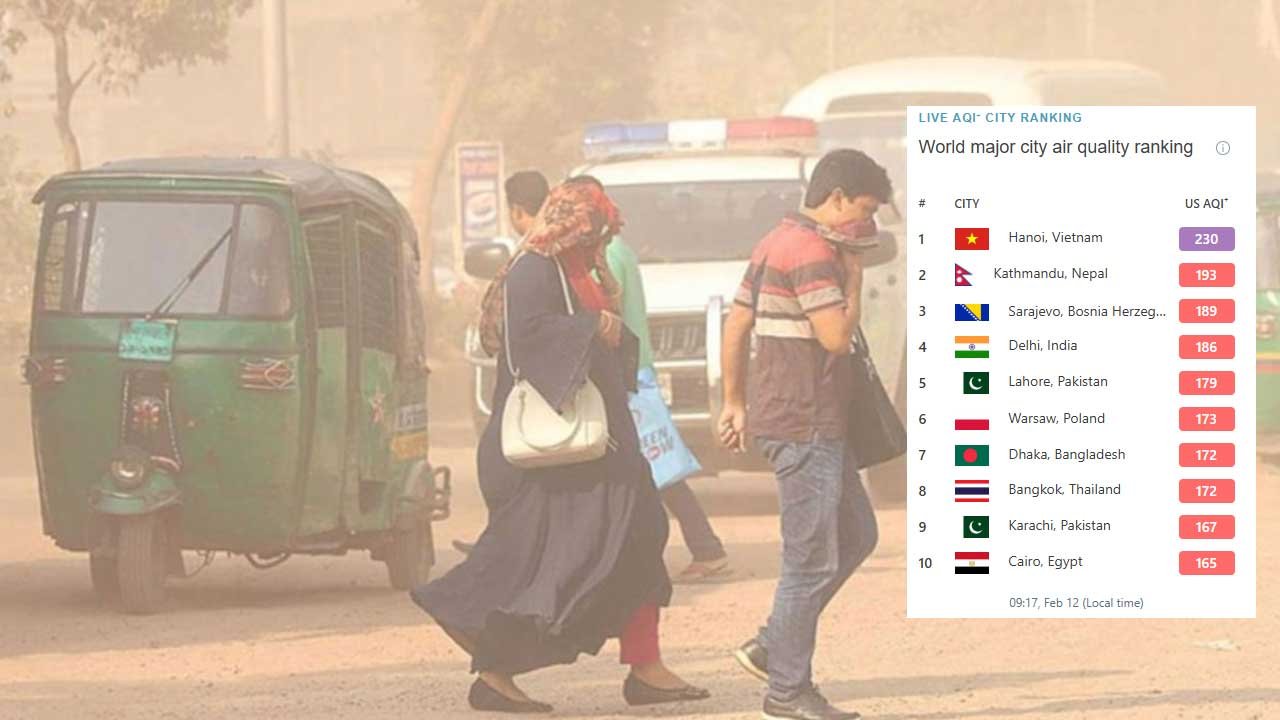Dhaka, the overcrowded capital city of Bangladesh, ranked sixth on the list of cities with the worst air quality with an AQI score of 171 at 8am on Wednesday.
Its air was classified as unhealthy, referring to the fact that air pollution levels are high enough to cause adverse health effects for some people.
When the AQI value for particle pollution is between 50 and 100, air quality is considered moderate, between 101 and 150, air quality is considered unhealthy for sensitive groups, between 150 and 200 is unhealthy, between 201 and 300 is said to be very unhealthy, while a reading of 301+ is considered hazardous, posing serious health risks to residents.
Vietnam’s Hanoi, Bosnia Herzegovina’s Sarajevo, India’s Mumbai and Delhi, and Pakistan’s Lahore occupied the first, second, third, fourth and fifth spots on the list, respectively.
The AQI, an index for reporting daily air quality, informs people how clean or polluted the air of a certain city is and what associated health effects might be a concern for them.
The AQI in Bangladesh is based on five pollutants: particulate matter (PM10 and PM2.5), NO2, CO, SO2 and ozone.
Dhaka has long been grappling with air pollution issues. Its air quality usually turns unhealthy in winter and improves during the monsoon.
Per the World Health Organization (WHO), air pollution kills an estimated seven million people worldwide every year, mainly due to increased mortality from stroke, heart disease, chronic obstructive pulmonary disease, lung cancer, and acute respiratory infections.
Source: UNB








